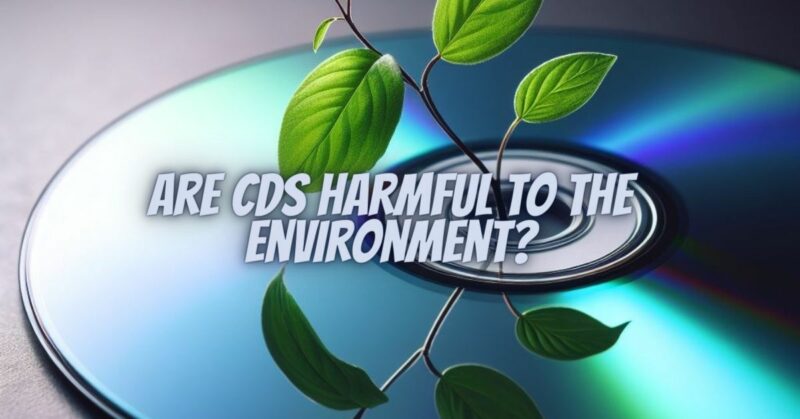Compact Discs (CDs) have been a staple of music consumption for decades, offering a reliable and high-quality physical format for music enthusiasts. However, as environmental concerns and sustainability issues gain prominence, it’s important to assess the environmental impact of CDs. In this comprehensive article, we will explore the lifecycle of CDs, their production, distribution, and disposal, to determine whether they are indeed harmful to the environment.
The Lifecycle of CDs
To understand the environmental impact of CDs, it is essential to consider their entire lifecycle:
- Production: The manufacturing process of CDs involves several stages, including the extraction of raw materials, such as polycarbonate plastic for the disc, aluminum for the reflective layer, and inks for labeling. Energy is consumed in the manufacturing process, and greenhouse gas emissions may occur.
- Distribution: CDs must be transported from manufacturing plants to retailers, which requires energy and generates carbon emissions. Packaging materials, such as jewel cases, also contribute to the environmental footprint.
- Use and Playback: Playing CDs involves the use of CD players and electronic devices that consume electricity. While the energy consumption per device is relatively low, it accumulates with widespread use.
- Disposal: When CDs reach the end of their useful life, they may become electronic waste (e-waste) if not properly recycled or disposed of. E-waste poses environmental hazards due to the presence of hazardous materials like plastics and metals.
Environmental Concerns with CDs
Several environmental concerns are associated with the production and disposal of CDs:
- Resource Extraction: The production of CDs relies on the extraction of raw materials, including petroleum-based plastics and metals, which have a significant environmental impact.
- Packaging Waste: The plastic jewel cases and other packaging materials used for CDs contribute to waste generation and resource consumption.
- Energy Consumption: The manufacturing and distribution of CDs consume energy, contributing to carbon emissions. Playing CDs also consumes electricity.
- Electronic Waste: CDs can become e-waste when discarded, and improper disposal can lead to environmental contamination.
- Obsolescence: With digital formats and streaming services becoming more popular, CDs may become obsolete, contributing to waste when people dispose of them.
Mitigating the Environmental Impact
While CDs have environmental drawbacks, there are steps that can be taken to mitigate their impact:
- Recycling: CDs are recyclable, and some recycling facilities accept them. Recycling CDs reduces e-waste and conserves resources.
- Digital Conversion: Digitizing CD collections allows users to access music without the need for physical CDs, reducing energy consumption associated with playback.
- Minimal Packaging: Choose CDs with minimal packaging, such as cardboard sleeves, to reduce plastic waste.
- Secondhand Market: Consider purchasing used CDs or selling or donating unwanted CDs to extend their lifecycle.
- Efficient Devices: Use energy-efficient CD players and electronic devices to reduce energy consumption during playback.
The environmental impact of CDs is a complex issue that depends on various factors, including production practices, distribution methods, and disposal choices. While CDs have drawbacks such as resource consumption and waste generation, they also offer durability and longevity, allowing for reuse and recycling.
Balancing the nostalgia and tangible appeal of CDs with environmental responsibility involves making conscious choices, such as recycling, reducing packaging waste, and embracing digital conversion when possible. By adopting sustainable practices, music enthusiasts can enjoy the best of both worlds: the musical charm of CDs and a reduced environmental footprint.

